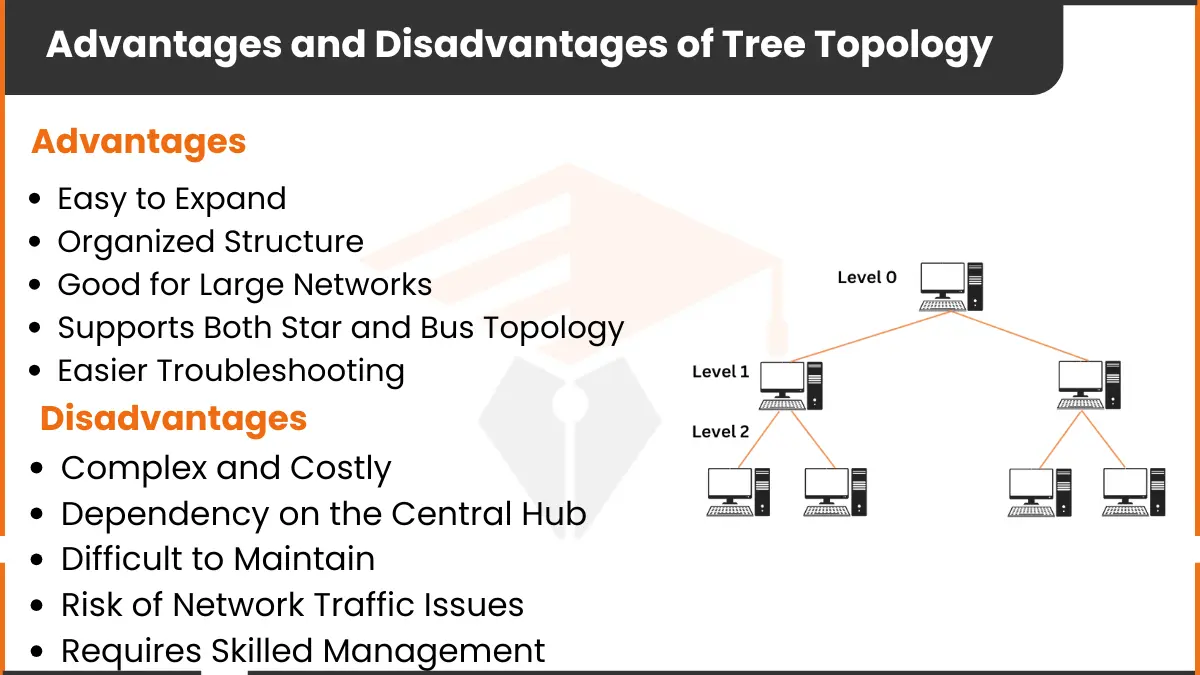How Mesh Topology Work -Components Involved In working
Mesh topology operates through devices (nodes) linked by direct connections. Each node talks to others, either in a full mesh (every device connected) or partial mesh (key devices connected). Data hops between paths automatically. This uses smart routing to pick the fastest or safest route. If a link breaks, the network reroutes traffic. This keeps things running smoothly.
In this article, we will discuss every step in detail. To understand its practical applications, read Examples of Mesh Topology in Networking.
Mesh Topology Working
The following steps show how mesh topology works in networking:
Step 1: Node-to-Node Communication
In a mesh network, every device can communicate directly with every other device. There is no need for a central hub or switch to manage the connections.
For example, imagine a network with five computers. In a full mesh topology, each computer is connected to the other four computers. This means Computer A can send data directly to Computers B, C, D, and E without passing through any other device.
This direct communication makes the network faster and more efficient.
Step 2: Data Transmission Process
When a node wants to send data to another node, it first identifies the best path to reach the destination. The network uses special algorithms that are called routing protocols. It decides the shortest or fastest path. These algorithms analyze the network and choose the most efficient route for the data to travel.
For example, if Computer A wants to send data to Computer D, the network might choose the path A → B → D because it is the shortest.
However, if the connection between A and B is busy or broken, the network will automatically choose another path, such as A → C → D. This ensures that the data reaches its destination without interruption.
Step 3: Redundancy and Reliability
One of the biggest advantages of mesh topology is redundancy. Redundancy means having multiple paths for data to travel. In a mesh network, if one path fails, the data can use another path to reach its destination.
For example, if the connection between Computer A and Computer B stops working, the network can still send data from A to B through other computers, like A → C → B or A → D → B. This makes the network very reliable because it can handle failures without stopping.
Step 4: Self-Healing Nature
Mesh networks are self-healing. This means they can fix themselves when a problem occurs. If a node or connection stops working, the network automatically reroutes the data through other available paths.
For example, if Computer C stops working, the network will no longer use paths that include C. Instead, it will find new paths, like A → D → B or A → E → B. This self-healing ability ensures that the network keeps running smoothly without any human intervention.
Step 5: Scalability
Mesh networks are easy to expand. New devices can be added to the network without causing problems. Each new device connects to the existing devices.
For example, if you add a sixth computer to the network, it will connect to the other five computers. This makes the network grow and become even more reliable. Scalability is one of the reasons why mesh topology is used in large networks like public Wi-Fi systems or smart home setups.
Components Involved in Its Working
Mesh topology relies on several key components to function properly.
1. Nodes: These are the devices in the network, such as computers, routers, or switches. Each node plays a role in sending and receiving data.
2. Connections: These are the links between nodes. Connections can be wired using Ethernet cables or wireless using Wi-Fi. Wired connections are faster and more stable, while wireless connections offer more flexibility.
3. Routing Protocols: These are the rules that help the network decide the best path for data. Routing protocols analyze the network and choose the most efficient route based on factors like distance, speed, and traffic.
4. Redundancy: This is the presence of multiple paths for data to travel. Redundancy ensures that the network remains operational even if some connections fail.





Leave a Reply